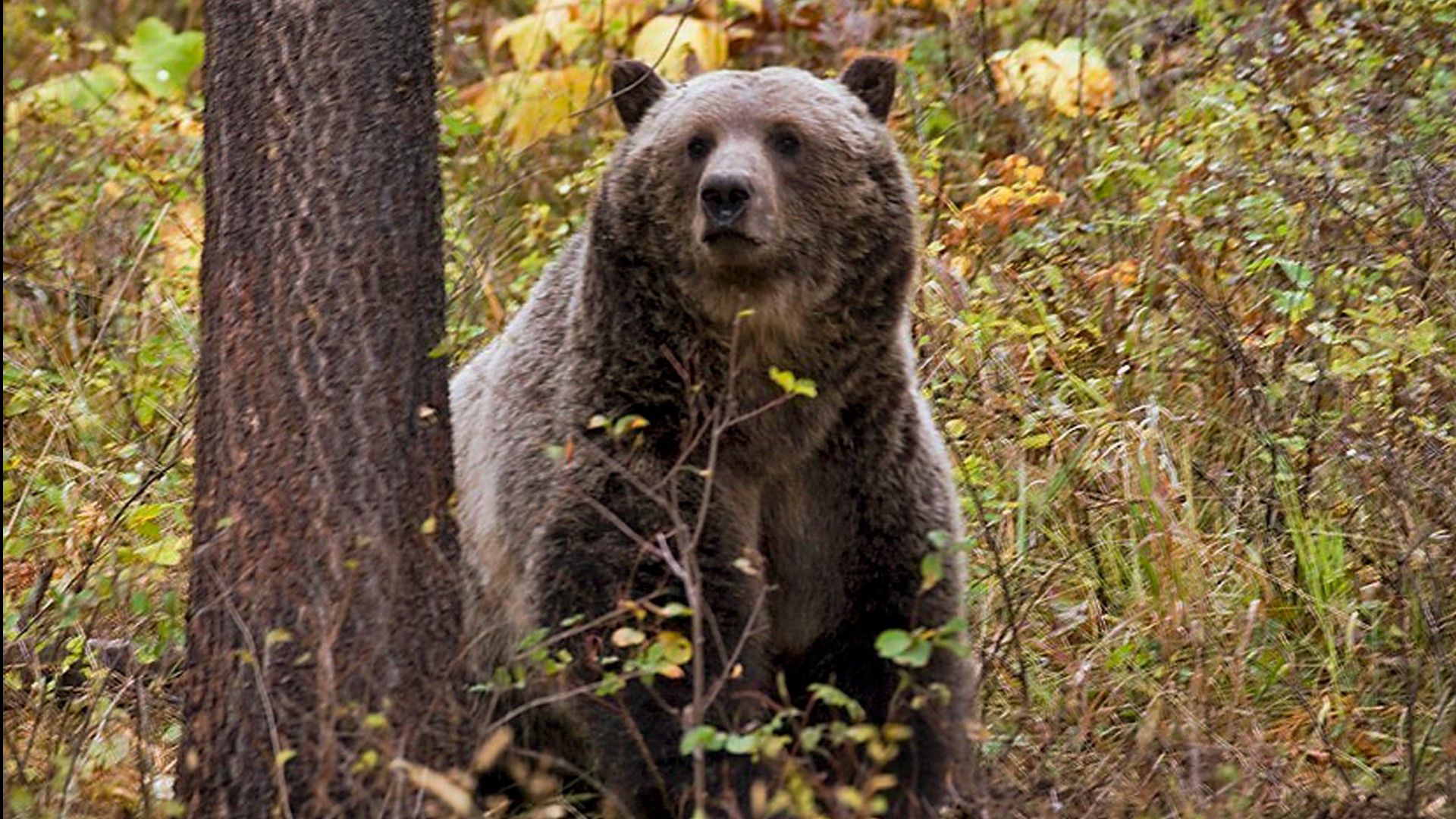WASHINGTON, USA — A new study that aims to create a “23andMe”-type database of brown bear DNA could help conservationists decide which grizzly populations to choose from to help repopulate the North Cascades.
The project is spearheaded by Dr. Joanna Kelley, a professor of ecology and evolutionary biology at the University of California-Santa Cruz and a principle faculty member at the Washington State University Bear Center.
Throughout the five-year project, Kelley and project partners will create a publicly accessible genome database of brown bear DNA from across the contiguous United States, which will help researchers understand the scope of genetic diversity of brown bears in North America and learn which populations are more genetically similar or different to each other. Kelley likens this database to something similar to a 23andMe or Ancestry.com type project - but for bears.
The brown bear population in the lower 48 is still on the rebound from an estimated low of between 700 to 800 bears in the 1970s when they were added to the endangered species list. This is down from an estimated 50,000 grizzly bears in the United States in 1800.
Work is still underway to bolster the grizzly population, including efforts to reintroduce the bears to areas where there were formerly established populations, including Washington state, and the Bitterroot ecosystem in Montana.
The U.S. Fish and Wildlife Service and the National Park Service announced earlier this year they are moving forward with plans to restore a population of grizzly bears to the North Cascade mountains, where the creatures have not been spotted since the ‘90s.
Kelley said at this point, very little is known about the brown bear genome, which covers a broad array of habitats across the United States. Learning more about genetic diversity, and which populations are similar to each other, could provide more information to conservationists about which brown bear populations are more likely to thrive if translocated.
“We don’t want to move bears from a coastal population to an inland population, where they may be very distantly related,” Kelley said. “We want to say, ‘We have a healthy population nearby that has similar genetic history, let’s move bears from that.’”
If bears have a more similar genetic history to the ones that formerly lived in the North Cascades, the idea is that they are more likely to be successful if picked up and moved to that environment.
Project partners including the U.S. Geological Survey, U.S. Fish and Wildlife, the WSU Bear Center and the University of Montana will provide samples that will give insight into the distinct genetic populations of brown bears across the United States. Kelley said they will utilize historical samples from the Smithsonian to get an idea of how genetic diversity has changed over time.
The project will provide a unique opportunity to look for evidence of the success of past translocation and reintroduction projects, as efforts to reintroduce bears in the North Cascades move forward.
“We want to use the genetics to determine, can we see a genetic history of those translocations?" Kelley said. "How many potential progeny did translocated individuals have? Were they contributing to the gene pool to the population that they were moved to?"
The project is jointly funded by a grant from the National Science Foundation and the Paul G. Allen Foundation. Kelley said the grant comes at a critical time in efforts to re-establish grizzly bear populations in Washington and elsewhere.

